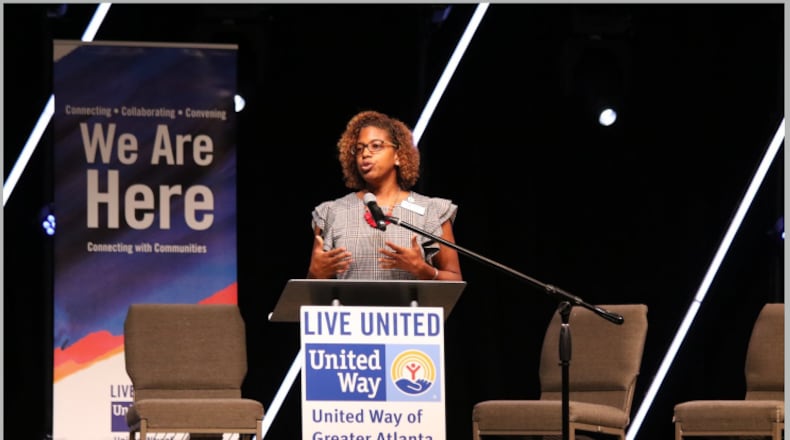Children’s well-being is increasing in Gwinnett County, but there is still a ways to go, according to data presented by the United Way of Greater Atlanta on Friday.
The organization hosted its Gwinnett State of the Children Summit with the Gwinnett Chamber of Commerce in Duluth on Friday morning. The inaugural event outlined how key factors in children’s health and success have changed since the United Way started tracking them in metro Atlanta in 2016.
READ | Gwinnett County approves $2.5M in historic house projects
The well-being score is calculated by measuring multiple factors, including rates of low weight births, adult health insurance coverage and children exceeding a third grade reading level. In 2016, Gwinnett’s child well-being score was 61.8. It went up to 64.1 in 2018.
The United Way determines a well-being score for each zip code in the county, and those scores fall on a scale coded from “very low” to “high.” The percentage of Gwinnett ZIP codes falling in the “low” or “very low” categories dropped in those two years, with “very low” dropping from 12% to 7% and “low” dropping from 26.6% to 23.1%. The United Way works with other non-profit organizations, local and county governments and other partners on programs designed to combat the problems that contribute to a lower score.
A significant factor that helped raise Gwinnett County’s score was an increase in high school graduation rates, said Ginneh Baugh, vice president of strategic impact for the United Way of Greater Atlanta.
But there are still “headwinds” keeping those “low” and “very low” numbers from decreasing further, Baugh said. In the Lawrenceville area, those headwinds include an increase of the percentage of children living in poverty and a decrease in the percentage of children considered financially stable. In the Norcross area, included in the ZIP code with the lowest child well-being score, there was an increase in the percentage of families struggling with the cost of housing in addition to the challenges cited for Lawrenceville.
There are also county-wide disparities that persist. The Latino high school graduation rate is 10 percentage points lower than that of non-Latino students. The percentage of children reading at a third grade level is 25 points lower for those who live in “very low” and “low” well-being score ZIP codes compared to those in “high” areas.
“We know there are gaps left to close, but we believe we can make that change,” Baugh said.
The Friday event focused heavily on identifying those gaps and potential solutions, highlighting healthcare, food insecurity, homelessness and early learning as priorities for Gwinnett. Those issues often overlap, especially when homelessness is involved, said Matthew Elder, director of the United Way’s HomeFirst Gwinnett initiative. A new homeless shelter is expected to open in Norcross in early 2020 as part of that initiative.
Speakers were optimistic about future solutions and current progress. While Gwinnett has the second-highest number of food insecure children in the state, the number of Gwinnett children regularly missing meals has decreased by 39% since 2014, according to Jon West, vice president of programs for the Atlanta Community Food Bank.
“Before you get too depressed about the statistics you see today,” said Bill McCargo, a board member for the Community Foundation for Northeast Georgia, “Remember we live in Gwinnett, where we tackle these issues head on.”
Like Gwinnett County News on Facebook | Follow us on Twitter and Instagram
Stay up to the minute with breaking news on Channel 2 Action News This Morning
About the Author
The Latest
Featured

